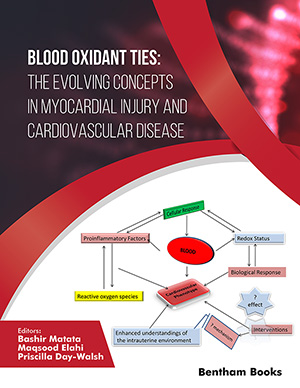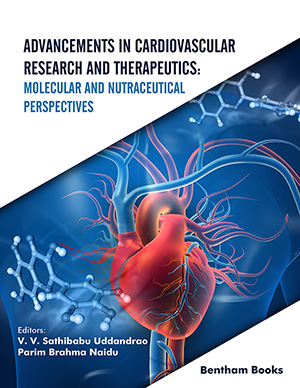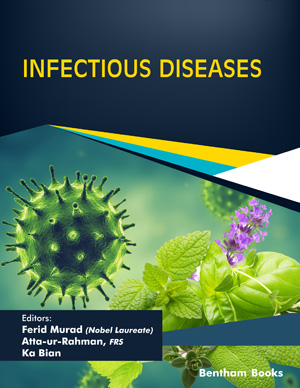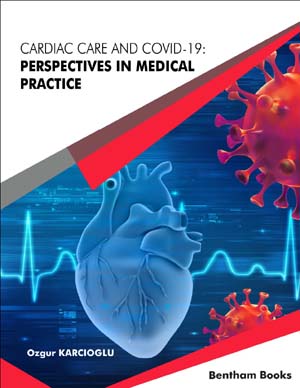
Abstract
Myocardial dysfunction is one of the main predictors of poor outcome in septic patients, with mortality rates next to 70%. During the sepsis-induced myocardial dysfunction, both ventricles can dilate and diminish its ejection fraction, having less response to fluid resuscitation and catecholamines, but typically is assumed to be reversible within 7-10 days. In the last 30 years, Its being subject of substantial research; however no explanation of its etiopathogenesis or effective treatment have been proved yet. The aim of this manuscript is to review on the most relevant aspects of the sepsisinduced myocardial dysfunction, discuss its clinical presentation, pathophysiology, etiopathogenesis, diagnostic tools and therapeutic strategies proposed in recent years.
Keywords: Myocardial dysfunction, cardiac depression, heart failure, sepsis, severe sepsis, septic shock, SIMD, RMD, LVEF, Paradoxically
Current Cardiology Reviews
Title: Sepsis-induced Cardiomyopathy
Volume: 7 Issue: 3
Author(s): Francisco J. Romero-Bermejo, Manuel Ruiz-Bailen, Julian Gil-Cebrian and Maria J. Huertos-Ranchal
Affiliation:
Keywords: Myocardial dysfunction, cardiac depression, heart failure, sepsis, severe sepsis, septic shock, SIMD, RMD, LVEF, Paradoxically
Abstract: Myocardial dysfunction is one of the main predictors of poor outcome in septic patients, with mortality rates next to 70%. During the sepsis-induced myocardial dysfunction, both ventricles can dilate and diminish its ejection fraction, having less response to fluid resuscitation and catecholamines, but typically is assumed to be reversible within 7-10 days. In the last 30 years, Its being subject of substantial research; however no explanation of its etiopathogenesis or effective treatment have been proved yet. The aim of this manuscript is to review on the most relevant aspects of the sepsisinduced myocardial dysfunction, discuss its clinical presentation, pathophysiology, etiopathogenesis, diagnostic tools and therapeutic strategies proposed in recent years.
Export Options
About this article
Cite this article as:
J. Romero-Bermejo Francisco, Ruiz-Bailen Manuel, Gil-Cebrian Julian and J. Huertos-Ranchal Maria, Sepsis-induced Cardiomyopathy, Current Cardiology Reviews 2011; 7 (3) . https://dx.doi.org/10.2174/157340311798220494
| DOI https://dx.doi.org/10.2174/157340311798220494 |
Print ISSN 1573-403X |
| Publisher Name Bentham Science Publisher |
Online ISSN 1875-6557 |
Call for Papers in Thematic Issues
Advances in Managing Cardiogenic Shock and the Value of Percutaneous Mechanical Circulatory Support.
Despite the advances in cardiology, the outcomes of patients with cardiogenic shock remain poor. There is an increasing interest and use of mechanical circulatory support for patients with cardiogenic shock. Additionally, the complexity of coronary interventions has increased during the last decade with the potential of treating more high-risk patients ...read more
The era of cardiac medication and implantable devices therapy in heart failure treatment continues
The heart failure (HF) remains a serious public health problem and affects 64 million people worldwide. Although advances in medical therapy and device assistance have significantly improved HF outcomes, the implications of HF are still dramatic. In recent years, innovative developments have been made in HF treatment management, based on ...read more
Related Journals
 33
33
- Author Guidelines
- Graphical Abstracts
- Fabricating and Stating False Information
- Research Misconduct
- Post Publication Discussions and Corrections
- Publishing Ethics and Rectitude
- Increase Visibility of Your Article
- Archiving Policies
- Peer Review Workflow
- Order Your Article Before Print
- Promote Your Article
- Manuscript Transfer Facility
- Editorial Policies
- Allegations from Whistleblowers
- Announcements
Related Articles
-
SARS-CoV-2 Infections, Impaired Tissue, and Metabolic Health: Pathophysiology
and Potential Therapeutics
Mini-Reviews in Medicinal Chemistry Erythropoietin and Oxidative Stress
Current Neurovascular Research A Survey on Left Ventricle Segmentation Techniques in Cardiac Short Axis MRI
Current Medical Imaging Inhibitory Effect of Fruit Juices on the Doxorubicin Metabolizing Activity of Carbonyl Reductase 1
Drug Metabolism Letters Autophagy: A Major Target of Cadmium Nephrotoxicity
Current Chemical Biology Role of miRNAs in Muscle Stem Cell Biology: Proliferation, Differentiation and Death
Current Pharmaceutical Design Inflammatory Mediators and the Failing Heart: A Translational Approach
Current Molecular Medicine Circulatory Syndrome: An Evolution of the Metabolic Syndrome Concept!
Current Cardiology Reviews The Role of Oxidative Stress in Smoking-Related Diseases
Mini-Reviews in Organic Chemistry Controlled Release of Growth Factors for Regenerative Medicine
Current Pharmaceutical Design Diabetes and its Complications: Role of Luteolin, A Wonder Chemical from the Natural Source
Current Diabetes Reviews Mesenchymal Stem Cells as a Source of Dopaminergic Neurons: A Potential Cell Based Therapy for Parkinson's Disease
Current Stem Cell Research & Therapy Incremental Value of Two Dimensional Speckle Tracking Echocardiography in the Functional Assessment and Characterization of Subclinical Left Ventricular Dysfunction
Current Cardiology Reviews Selective Divalent Copper Chelation for the Treatment of Diabetes Mellitus
Current Medicinal Chemistry Reversal of Cardiac Iron Loading and Dysfunction in Thalassemic Mice by Curcuminoids
Medicinal Chemistry Effect of Simvastatin use on Autonomic Function in Patients with End Stage Renal Disease
Cardiovascular & Hematological Disorders-Drug Targets Updates on HCN Channels in the Heart: Function, Dysfunction and Pharmacology
Current Drug Targets Recent Progress in Gene Therapy and Other Targeted Therapeutic Approaches for Beta Thalassemia
Current Drug Targets Circulating Endothelial Progenitor Cells Characterization, Function and Relationship with Cardiovascular Risk Factors
Current Pharmaceutical Design GLP - 1 Analogs: Newer Molecules, Newer Uses
Recent Patents on Endocrine, Metabolic & Immune Drug Discovery (Discontinued)














